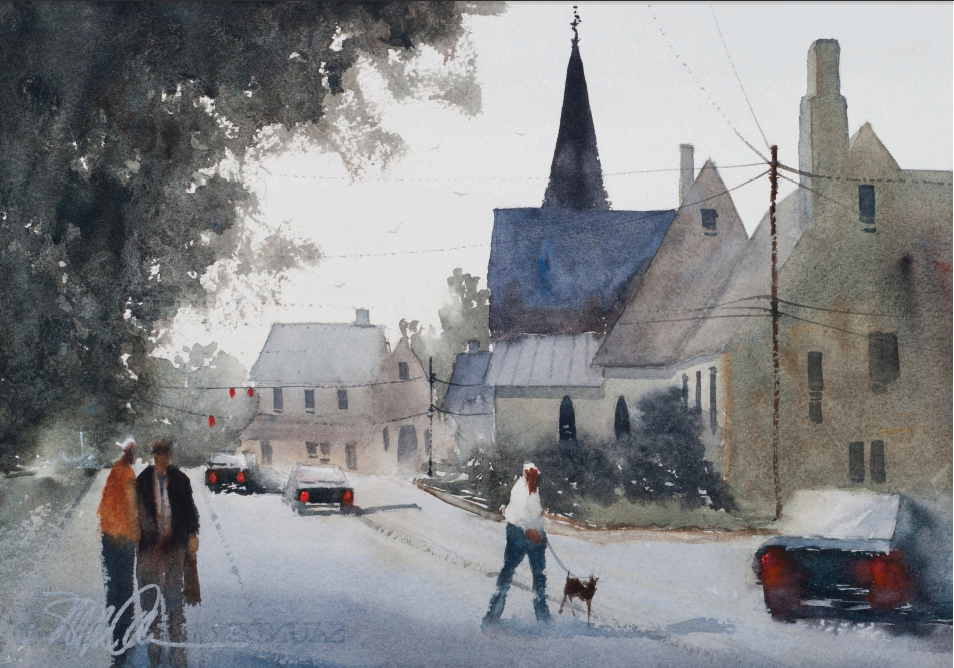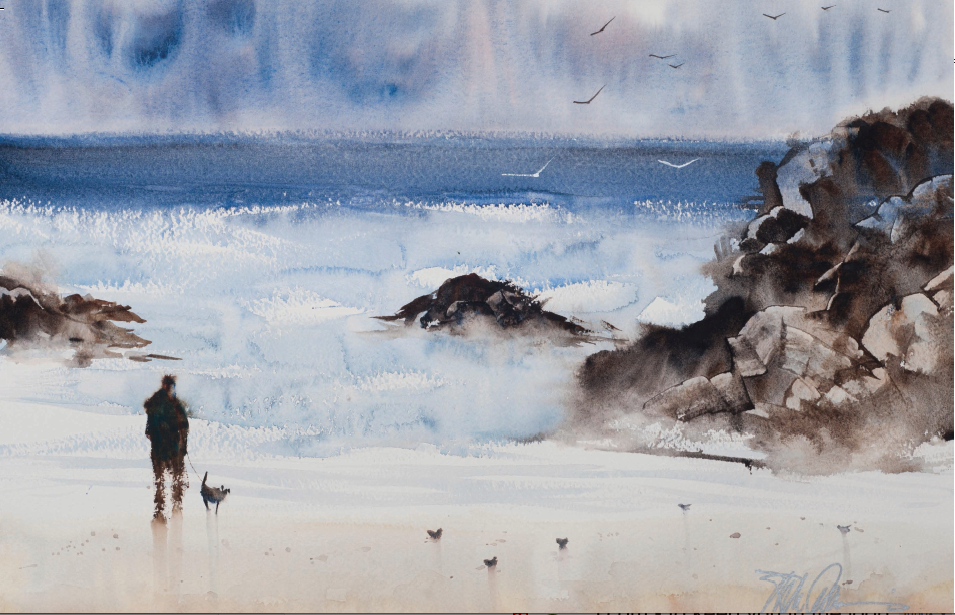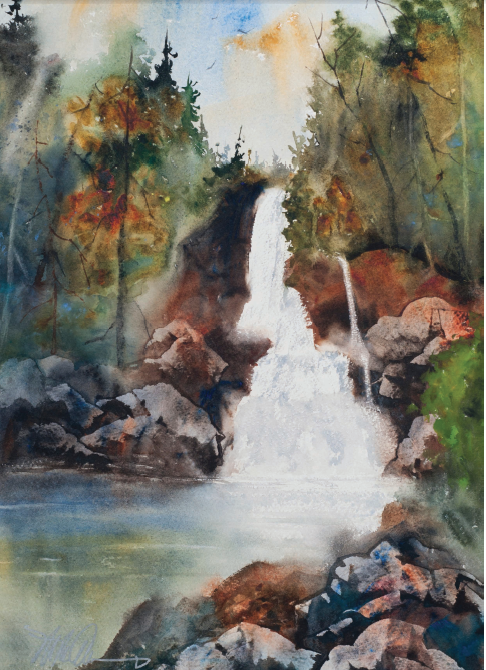To paraphrase the legendary artist and teacher Edgar Whitney (1891-1987), the amateur is afraid of boldness while the professional is afraid of timidity. Mick McAndrews keeps that in mind as he strives to capture both the identity and the energy of a landscape. He came to this understanding through study and practice.

The artist’s emphasis on boldness comes from his understanding of the materials and techniques involved in watercolor painting, as well as from his personal style of expression, which he refers to as “loose and juicy.” It is in McAndrews’ nature to be spontaneous, and that nicely complements the intrinsic wonder and beauty of the medium. He firmly believes that one’s first stroke is often the best, and that’s especially true if it is left intact.
Timid strokes or repeated washes of color can lead to a flat and muddy painting. To avoid this, the artist must understand color theory, the art of confident color mixing, how to apply color with a limited number of brushstrokes, and the importance of planning and of saving white paper to enhance the feeling of light.

McAndrews believes that success in watercolor results from the partnership between artist and medium; finding a balance within the knowledge, technique, and skill of the painter; and leaving room for the magic that makes watercolor so distinctive. McAndrews achieves his desired results by carefully planning, thinking more and painting less, and emphasizing energetic paint application.

“I follow a traditional approach, working from light to dark and transparent to opaque color applications, aiming to capture a scene with two or three well-calculated washes of light, medium, and dark values applied with the biggest brushes possible,” McAndrews explains. “The challenge is to hold on to the pure white paper so those reserved shapes bring focus, clarity, and definition to the painting. The negative shapes have to be planned from the beginning because any attempt to blot or rub paint off can never bring back the brilliance of untouched paper.
“I encourage students to make thumbnail value sketches that clearly define saved white space, as well as the most important shapes and values, to help reduce the complexity of a scene down to its most essential elements.”

The artist continues, “I dampen the surface of the paper so the first wash of color will flow and establish an interesting pattern of fluid, abstract shapes. A spray bottle is indispensable for exercising some control over the otherwise random patterns of color. Paint can move, mingle, and mix on the paper in the early stages, and often it is advantageous to let the colors mix on the paper rather than on the palette.
“A key aspect of watercolor painting is being sensitive to the dampness of the paper and knowing when to let pigments blend freely on a very wet surface, and when to hold back until the surface is dry enough to let each stroke maintain defined edges. That kind of control comes from experience.

Instinct & Control
There are some methods for gauging the amount of dampness. “As far as controlling watercolor,” McAndrews says, “the glistening, reflective surface of the wet paper may give a clue to the degree of dampness, but until students do a lot of painting, they won’t have an instinctive sense of how paint will move, intermix, and dry on wet or dry paper. Moreover, it takes time to understand that watercolors look more intense and vibrant when they are wet than when they are completely dry. Initially students are disappointed that the mixed colors they thought were rich and intense have dried to a lighter, paler finish.








Beautiful work!!
What a great tip. As a beginner I am struggling with an issue you mention–“A key aspect of watercolor painting is being sensitive to the dampness of the paper and knowing when to let pigments blend freely on a very wet surface, and when to hold back until the surface is dry enough to let each stroke maintain defined edges. That kind of control comes from experience.” Thanks for mentioning this. I have followed some tutorials that never mention how camp the paper is they are painting on and thus I struggle with results. I will always remember your tip!
Absolutely! The secret to these fine paintings is the loose initial stages then to stop oneself overworking.
Great ‘tips’ on fundamentals from a very fine artist!
I am 80 years old and have been teaching art for 46 years….Mick’s words can never be said enough….beautifully expressed!